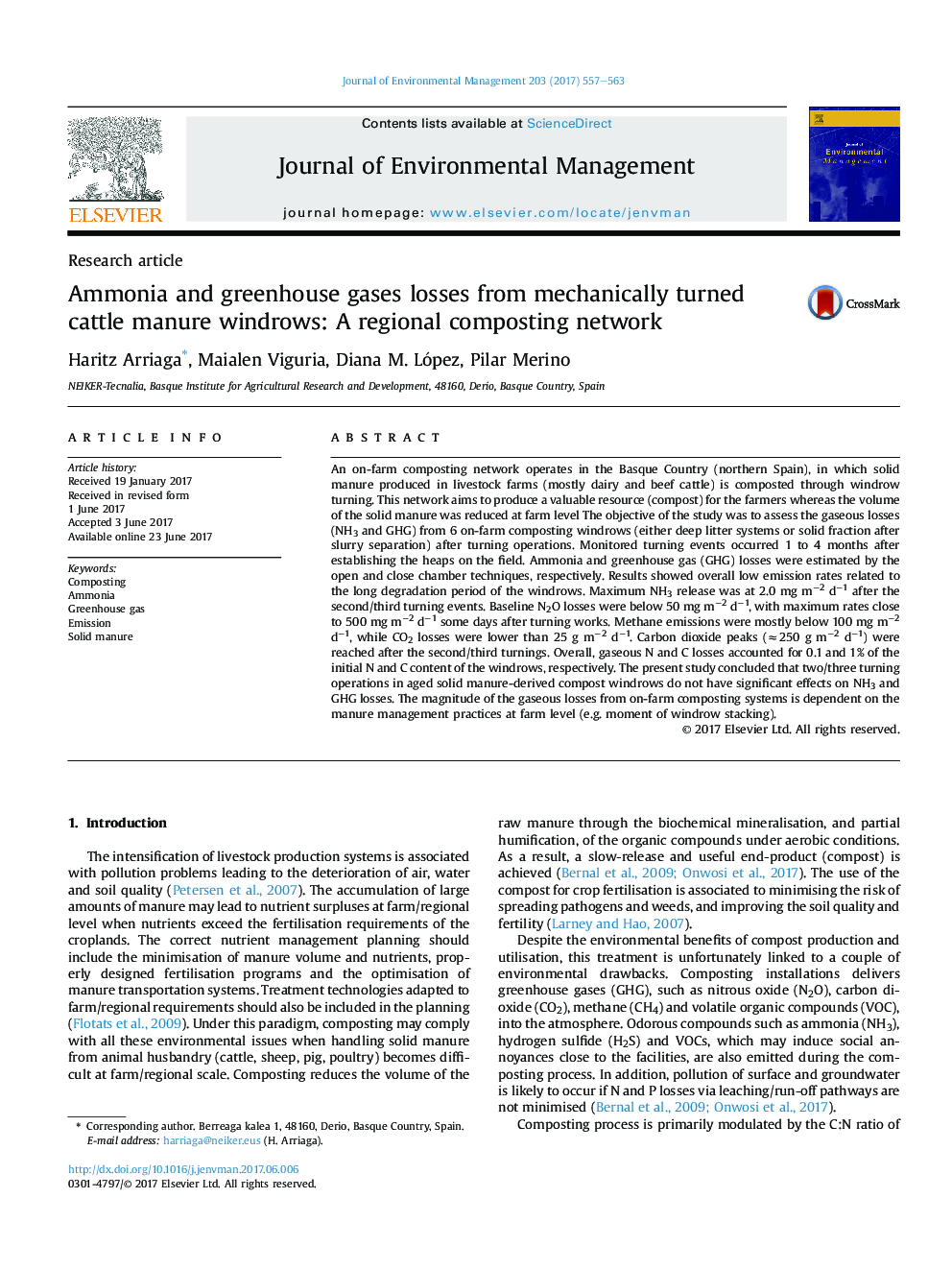| کد مقاله | کد نشریه | سال انتشار | مقاله انگلیسی | نسخه تمام متن |
|---|---|---|---|---|
| 5116542 | 1378099 | 2017 | 7 صفحه PDF | دانلود رایگان |
- Two turning operations in mature compost windrows do not have significant effects on NH3 and GHG losses.
- On-farm manure composting-turning networks are dependent on the manure management practices at farm level.
- The low emission level observed was related to the overall limited microbial activity and the low OM degradability of the windrows.
An on-farm composting network operates in the Basque Country (northern Spain), in which solid manure produced in livestock farms (mostly dairy and beef cattle) is composted through windrow turning. This network aims to produce a valuable resource (compost) for the farmers whereas the volume of the solid manure was reduced at farm level The objective of the study was to assess the gaseous losses (NH3 and GHG) from 6 on-farm composting windrows (either deep litter systems or solid fraction after slurry separation) after turning operations. Monitored turning events occurred 1 to 4 months after establishing the heaps on the field. Ammonia and greenhouse gas (GHG) losses were estimated by the open and close chamber techniques, respectively. Results showed overall low emission rates related to the long degradation period of the windrows. Maximum NH3 release was at 2.0 mg mâ2 dâ1 after the second/third turning events. Baseline N2O losses were below 50 mg mâ2 dâ1, with maximum rates close to 500 mg mâ2 dâ1 some days after turning works. Methane emissions were mostly below 100 mg mâ2 dâ1, while CO2 losses were lower than 25 g mâ2 dâ1. Carbon dioxide peaks (â250 g mâ2 dâ1) were reached after the second/third turnings. Overall, gaseous N and C losses accounted for 0.1 and 1% of the initial N and C content of the windrows, respectively. The present study concluded that two/three turning operations in aged solid manure-derived compost windrows do not have significant effects on NH3 and GHG losses. The magnitude of the gaseous losses from on-farm composting systems is dependent on the manure management practices at farm level (e.g. moment of windrow stacking).
Journal: Journal of Environmental Management - Volume 203, Part 1, 1 December 2017, Pages 557-563
